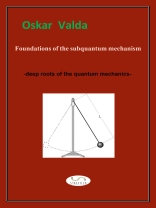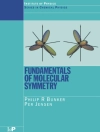Many physicists have pointed out that the formulation of Quantum Mechanics is missing an important piece. Its theoretical incompleteness has been evoked, there has been talk of hidden variables, non-locality of the theory, provoking long debates which have left things at a standstill. There is even Einstein’s famous phrase in which he says that ‘
God does not play dice’. A big mistake! If God did not play dice, as Darwin taught us, there would be neither evolution nor the immense variety of our world which would be limited to a single atom. Perhaps more simply the theory lacks an unprecedented operation of analysis and synthesis capable of providing the ‘missing part’ or a new logical paradigm capable of making Quantum Mechanics understandable to human beings.
The book starts from the basics with the analysis of the concept of Planck’s constant
h in terms of Minimum Action, i.e.: a flow of a quantum of energy in the unit of time. The next step is to formalize the motion as a phenomenon on the fabric of a space that is also quantized, recently back in fashion in Quantum Gravity.
Attention! In this case a mysterious question arises: how can one conceive the movement of a particle between discrete areoles of space with solution of continuity? A promising idea may be that of resorting to the strange dual nature of wave-matter discovered by de Broglie by means of which the particle would not move but probably only its information is translated in wave form between spatial quanta. However, this idea requires a subquantum mechanism where the quantum vacuum becomes a key participatory element, or rather a fundamental intermediary already glimpsed in Alain Aspect’s experiments on entanglement. The development of a paradigm of the subquantum mechanism would show among other things that the main concepts of special and general relativity can be derived from Quantum Mechanics. This approach helps to clarify within an intelligible logical structure several obscure aspects of modern physics including Quantum Gravity itself and also the root cause for which space is curved by the presence of mass. In fact, according to advanced physics, space is anything but inconsistent, as supposed at the time by the Michelson-Morley test.
Einstein’s well-known reasoning –
gedanken experiment- of the elevator represented an ingenious analogy on gravity capable of providing a final effect that can be calculated with extreme precision, alas overlooking the profound cause of the phenomenon. In fact, General Relativity does not predict that gravity implies invisible attractive forces between masses but only a deformable geometry that pilots the trajectories of the planets along the edge of a sort of funnel. Nevertheless, we have a problem namely that to bend a spatial fabric, by no means inconsistent, a force whose origin is obscure is needed. On this specific point no one has been able to provide an exhaustive logical framework. Instead, it seems that the existence of Matter in space requires quantized actions of energy without which the objects of the world would disappear instantaneously. Such an effect would delight the great physicist Ernst Mach who hypothesized mass as a condensation of accelerations that were exchanged between them in terms of gravitational attraction.
(With a more philosophical approach see by the same author: ‘The hidden paradigm of Quantum Mechanics’- Streetlib).
Oskar Valda
Foundations of the subquantum mechanism [EPUB ebook]
deep roots of the quantum mechanics
Foundations of the subquantum mechanism [EPUB ebook]
deep roots of the quantum mechanics
Acquista questo ebook e ricevine 1 in più GRATIS!
Lingua Inglese ● Formato EPUB ● ISBN 9791222071787 ● Dimensione 0.9 MB ● Casa editrice streetlib ● Pubblicato 2023 ● Scaricabile 24 mesi ● Moneta EUR ● ID 8849763 ● Protezione dalla copia senza












